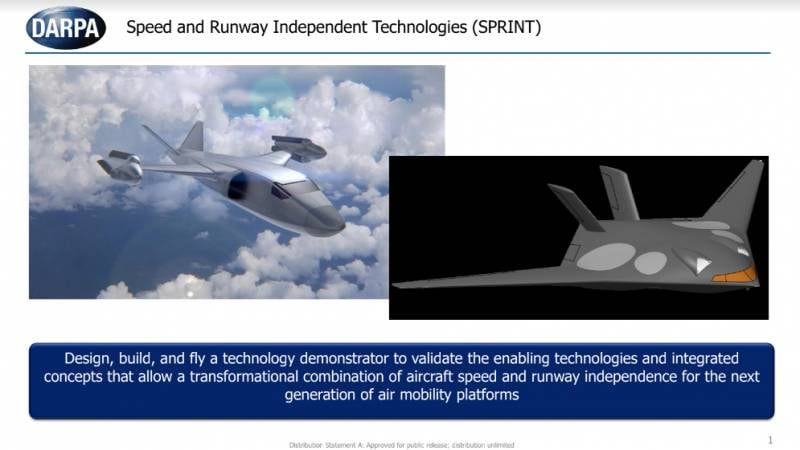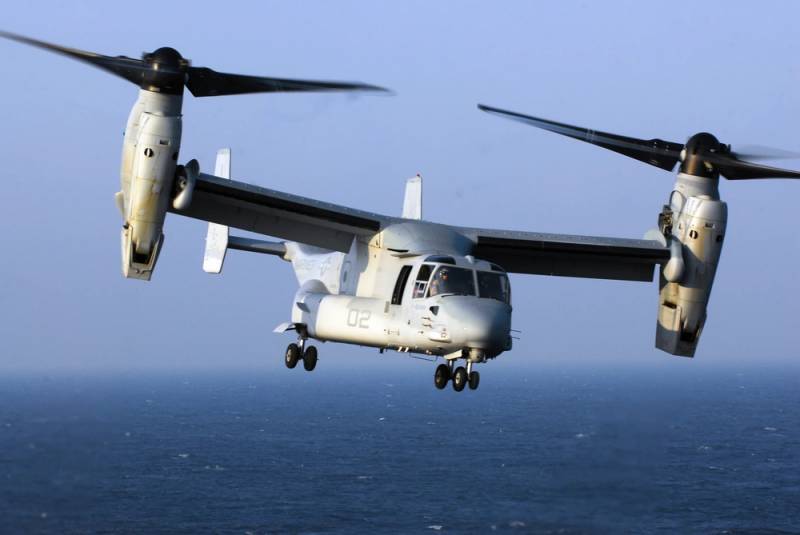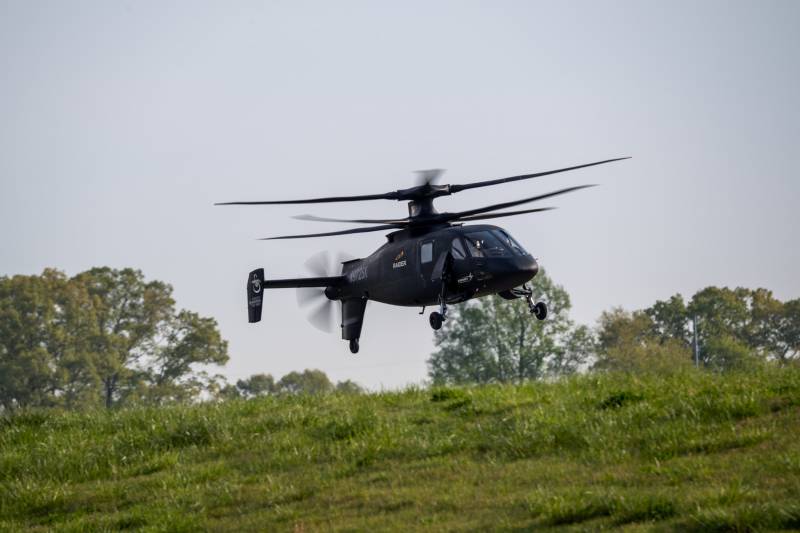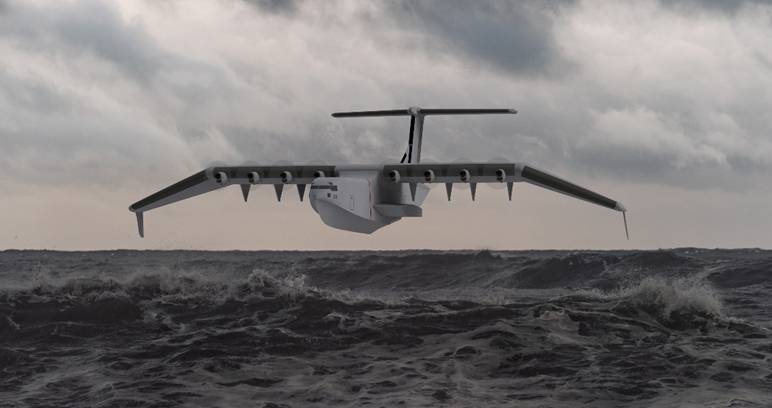DARPA launches development of high-speed VTOL aircraft SPRINT

DARPA SPRINT Aircraft Concepts
The Pentagon Advanced Research Agency DARPA and the Special Operations Command are launching a new research program under the code SPRINT. Its goal is to find solutions and technologies for the subsequent development and construction of an aircraft with a special combination of flight and technical characteristics, capable of transporting people or cargo.
Program start
According to the American press, on the first day of March, the leadership of the DARPA agency held a presentation during which it officially announced the launch of the Speed and Runway Independent Technologies program (“Speed and runway independence technologies”) or SPRINT. During the event, they revealed the main wishes for the project, and also showed a couple of concepts that reveal the approximate purpose of the work.
On March 9, the Agency issued a formal request for information and proposals. The document contains the main requirements for the SPRINT program, subject to open publication, the timing of its implementation, funding, etc. A few days later, DARPA posted an updated version of the document.
According to open data, the collection of applications from potential program participants will continue until May 5. Then DARPA and the Special Operations Command will review the received technical proposals and select the most successful ones. The selection will be made before the end of the current financial year, i.e. until October 2023. Then there will be contracts for the first stages of the program - Phase 1 and 2.
SPRINT design is expected to continue until mid-FY2026. Phase 1A will complete the concept development. If any issues persist as a result of it, they will be fixed in the optional “1B” phase. Then the full development of the project will begin, and experimental equipment will also be built. All these activities are referred to the 2nd phase of the program.
According to the schedule from DARPA, the development of the project will continue until mid-2026 FY. By this time, the contractor will have to start building the first prototype. They want to launch ground tests by the end of the same year, and in the spring of 2027 the first full-fledged flights will take place. Flight testing is designated as Phase 3 and should be completed during FY2028.

Convertoplane V-22 - serial model of vertical takeoff transport
Technical requirements
The purpose of the SPRINT program is to find the optimal shape of an aircraft with high speed characteristics and the ability to operate from small runways. In this case, technologies should be used that allow scaling such a device over a wide range. So, at the stage of flight tests, it is proposed to use a reduced prototype technology demonstrator. In parallel, the contracting organization will have to work out a project of a full-size aircraft suitable for solving real problems.
According to the terms of reference from DARPA, the prototype SPRINT can have any reasonable size and takeoff weight. Aerodynamic appearance, composition of units, etc. can be any - upon reaching the specified characteristics. The load capacity of the demonstrator must exceed 1000 pounds (454 kg). In the manned version, it is necessary to provide volumes for the cockpit and control and recording equipment.
The SPRINT prototype must reach speeds of at least 400 knots (740 km/h) at altitudes of 15-30 thousand feet (4,5-9,1 km). Flight range - at least 200 nautical miles (370 km), flight duration - from 90 minutes. The product must perform maneuvers with a slight overload. Takeoff and landing can be performed in any way that the developer deems appropriate. At the same time, it is necessary to ensure the operation of the aircraft from platforms of a minimum size.
On the basis of the same technical solutions, in the future it is planned to develop a full-size aircraft capable of solving transport problems. The customer does not specify its dimensions and weight, but requires a carrying capacity of at least 5 thousand pounds (2,27 tons) and a cargo compartment measuring 30 x 8 x 7 feet (9,1 x 2,4 x 2,2 m). Such a compartment will allow you to transport standard cargo pallets and even some cars.
The maximum speed of such transport at altitudes of 15-30 thousand feet must necessarily reach or exceed 400 knots. If possible, it should be increased to 450 knots (830 km/h). Range parameters, required takeoff and landing characteristics have not yet been specified.
Two concepts
During the presentation of the SPRINT program, a couple of concepts of a promising aircraft from DARPA specialists were shown. Obviously, these images have nothing to do with future projects from contractor organizations, and finished SPRINT demonstrators will look different. However, the concepts show what new technology the Advanced Development Agency sees.

Sikorsky S-97 - an attempt to create a helicopter with high flight speed
The first concept shows a tiltrotor of a characteristic appearance. This aircraft has a large cross-sectional fuselage capable of carrying cargo; air intakes are placed on the sides. The tiltrotor is equipped with a swept wing, at the ends of which are placed rotary nacelles with propellers. The tail unit is made V-shaped.
Obviously, such an aircraft must perform takeoff and landing with vertically located gondolas, and their rotation to a horizontal position allows you to fly "like an airplane." At the same time, the aerodynamics of the airframe and other design features should ensure a high flight speed.
The second figure shows a "tailless" with a three-dimensional streamlined fuselage, smoothly mated with a swept wing. The plumage is again V-shaped. On the upper surface of such a fuselage, bucket air intakes of sustainer engines are placed. In addition, there are four characteristic circles on top - probably the intake devices of the lifting propulsion system.
In this case, we can talk about a vertical takeoff and landing aircraft. Due to separate engines, he will be able to take off and land without a run, and then move on to level flight. At the same time, the design also allows for a conventional take-off with a run.
DARPA encourages potential SPRINT participants to look beyond these concepts and explore other architectures and schemes. Perhaps the best performance will be able to show an aircraft of a different appearance. In general, the main task of the program is precisely the study and comparison of different options and ideas.
With well-known benefits
The Pentagon, represented by the DARPA agency, is exploring the possibility of creating transport aircraft with a special combination of performance characteristics. It is necessary to provide vertical and / or short takeoff and landing, as well as to obtain a high subsonic flight speed. At the same time, the full-size SPRINT apparatus will have to carry several tons of load.

Liberty Lifter is another advanced air transport project from DARPA
Whether it will be possible to solve the assigned tasks and create an aircraft / tiltrotor / helicopter with the required parameters and capabilities is not yet completely clear. However, the American aviation industry has a lot of experience in this area and is likely to be able to fulfill the DARPA order. At the same time, questions remain about the complexity of such a project, as well as the timing and quality of work. However, the experimental nature of the SPRINT program allows some freedom.
The SPRINT program is just starting, but it is already clear what results it can give, and why the Special Operations Command and DARPA have launched such work. It is easy to see that an aircraft with a given level of performance should be of great interest to special forces, as well as to the army as a whole.
Carrying capacity of at least 5 thousand pounds allows you to transport both entire units with weapons and equipment, as well as a variety of cargo, up to cars. In this regard, the full-size SPRINT will not be inferior to the largest and heaviest US Army helicopters. Such an aircraft will also be able to operate from small areas, but will surpass helicopters in speed and, possibly, in other flight characteristics.
Thanks to SPRINT, the transfer of special forces or cargo will be greatly simplified and accelerated. In addition, transport units or units with a mixed fleet of vehicles will become a more flexible and convenient tool - they will be able to select the vehicle that best suits a specific task.
In the distant future
Thus, the Special Operations Command wants to receive a fundamentally new type of air transport for special tasks, and the DARPA agency is ready to ensure its development. A corresponding experimental program has been launched, and real work will begin in the foreseeable future.
The customer has a certain reason for optimism, but he does not have to expect much yet. The SPRINT program has just been launched, and the coming months will be spent searching for performers, working out general concepts, etc. A prototype technology demonstrator will fly only in 2026-27. This means that even with the success of the experimental program, a full-fledged aircraft suitable for real operation will appear only in the thirties. Whether the result of such an expectation is worth it is a big question.
Information